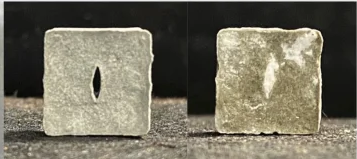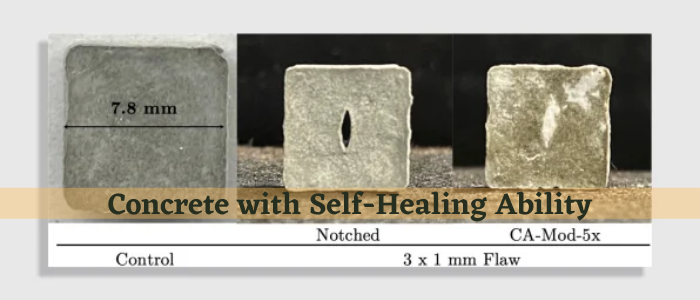No doubt, concrete can be considered the most used construction material used on earth. It is solid, versatile, durable and most importantly, cheap. But, their is just a major problem with concrete and it is cracking. why? because concrete can bear compressive stresses but not the tensile ones. So as said, what happens when concrete experiences tensile stresses beyond its capacity:::: it simply cracks. We typically compensate for this downside by using the steel reinforcement bars to carry the tension forces. This actually helped a lot. But there is still a potential for cracking which may cause other major problems a side from failure. Those problem can be summarized as cracks are the pathways for detrimental substances from the surrounding environment.
The solution? Self Healing Concrete
There are many options that engineers can use to protect concrete (not covered here). One recent discovery by the scientists probably will revolutionize the construction industry and that is; Self-healing concrete; a concrete the is capable of repairing its cracks. looks like magic? right!!!
So, how does the self-healing work?
Without going into complicated details, the idea of self healing is simply placing a healing agent inside concrete (usually during the mixing process). When a cracks develops, the healing agent does its work and fills the crack. Examples of healing agents are: bacteria (yes, bacteria) , sodium silicate, and even fungus. Now, let us go shortly over each type of these agents.

Making Self Healing Concrete using Bacteria
The inventor of self healing concrete is H. Jonkers in 2006. Jonkers is a professor of microbiology at Delft University of Technology. He found after 3 year of trials that the prefect healing bacteria is bacillus.
Jonkers commented that we need bacteria that can survive the harsh environment of concrete and Bacillus is a perfect candidate for the job. Bacillus bacteria is capable of surviving the high alkalinity of concrete and produce spores that can live up to 4 years without any food or oxygen.
Jonkers did not just put the bacteria in concrete. He also added calcium lactate to the mix. This calcium lactate acts as the food for bacillus. When Bacteria feed on calcium lactate, they produce limestone which fills and repair the cracks in concrete.
Making Self Healing Concrete using Sodium Silicate
This self healing agent (sodium silicate) is inexpensive and is not as complicated as the bacterial self-healing concrete. Sodium silicate is placed in micro-capsules and then added to the concrete mix.
What happens next?
When a crack forms in concrete and crosses the capsules, they get ruptured and release the sodium silicate. Sodium silicate then reacts with the calcium hydroxide within the concrete (calcium hydroxide is a result of cement hydration with water), forming a calcium-silica-hydrate gel that fills/repairs the crack and hardens within a week.
Making Self Healing Concrete using Fungus
This type is inspired from the mechanism by which our bodies work. Researchers from Rutgers and New York’s Binghamton universities created a self healing concrete based on fungus.
They used the spores from The Trichoderma reesei fungus. These spores remain dormant until the first crack begin to form. At this point, fungus begin to fill these areas.
Next Steps for Self Healing Concrete
The previous discussion can tell the self healing concrete is a going to be a total game-changer in the field. This sole advantage of repairing the cracks will tremendously decrease the repair and maintenance cost of structures during their service time. Sidewalks and pavements can benefit from this healing ability to save the wear and tear.
That being said, self healing concrete is still in the development stage. It may take some time for it to be perfected and applied in real structures. But, once this happens, self healing concrete it will dominate the industry. So, stay tuned!
Read Also:
